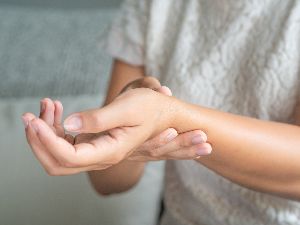
Some skin disorders cause a wide range of effects, which is the case with scleroderma. Characterized by hard, tight patches of skin, this autoimmune disorder requires lifelong management to ensure optimum health and wellness. A dermatologist will work with you to develop the right treatment plan, but here are a few facts to help you better understand the disorder and its symptoms and treatments.
A Guide to Scleroderma
1. What causes this disorder?
Scleroderma results from excessive collagen production, which is a protein that gives the skin its elasticity. Why some people produce more collagen than others remains unknown, but doctors believe it's due to a combination of environmental triggers and genetic makeup. Immune dysfunction is another critical factor, as many people with scleroderma also have some other autoimmune disorder.
2. Are there different types of scleroderma?
With localized scleroderma, symptoms usually affect the skin alone. People with the localized form have hard, discolored deposits or streaks throughout the body, such as on the arms, legs, and abdomen. The second type of scleroderma is systemic sclerosis, which affects more areas of the body, including the internal organs in some cases.
There are two subtypes of systemic sclerosis. Limited cutaneous systemic sclerosis primarily affects the hands and face. However, it can also cause problems with the esophagus and may result in Raynaud's phenomenon, which is a condition where the fingers and toes turn blue or white when exposed to cold temperatures. With diffuse cutaneous systemic sclerosis, skin tightening can be found in many other areas of the body, such as internal organs. Depending on which areas of the body are affected, joint pain, hand swelling, digestive issues, and other effects may result.
3. Is there a difference between adult and pediatric cases?

Adult cases usually occur between young adulthood and middle age. The majority of those affected are women, but men can also develop scleroderma. When it comes to pediatric cases, most children experience localized scleroderma as opposed to systemic sclerosis.
4. How is it treated?
Once a dermatologist has provided a diagnosis, symptom treatment is the next step. Steroid medications can be taken orally or applied topically to reduce skin swelling. Medication is also used to treat symptoms caused by digestive dysfunction, such as acid reflux, as well as prevent effects on internal organs. For people with Raynaud's phenomenon, warm clothing is recommended to maintain a reasonable body temperature. When movement is limited due to effects on the joints, physical and occupational therapy are often beneficial.
If you are suffering from scleroderma, come to Kailua Dermatology Associates in Kailua, HI. This dermatology clinic in Oahu uses advanced treatments and proven techniques for treating skin disorders like acne, eczema, skin cancer, and many others. They're also constantly developing their knowledge so they can benefit their patients with the latest skin care advances. Call (808) 261-6133 to schedule an appointment with a dermatologist, or visit the website to learn more about their services.
About the Business
Have a question? Ask the experts!
Send your question

